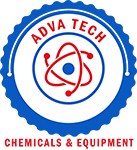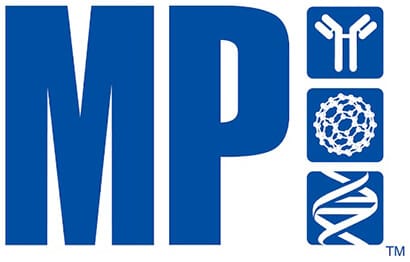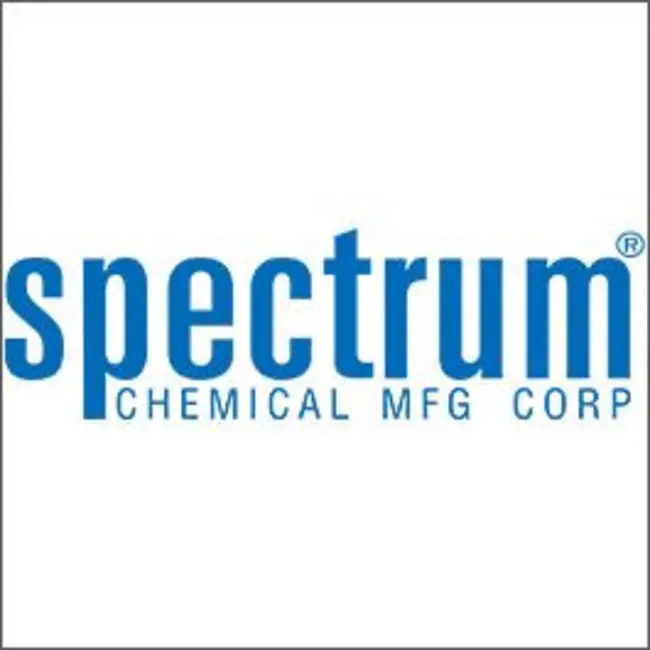GenScript Nanjing Inc.
Showing 1451–1500 of 2554 results
-
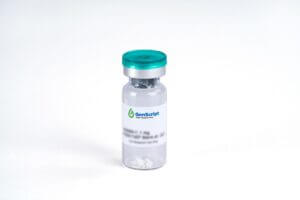
IL-5, Human(CHO-expressed)
$1,470.56 Add to cart View Product DetailsInterleukin-5 (IL-5), produced by mast cells, T cells and eosinophils, is responsible for the activities attributed to eosinophil differentiating factor, B cell growth factor II and T cell-replacing factor (TRF). It can increase production and mobilization of eosinophils and CD34+ progenitors from the bone marrow. IL-5 plays an important role in inducing cell-mediated immunity against parasitic infections and certain tumors. IL-5 also promotes differentiation of basophils and primes them for histamine and leukotriene release.
-
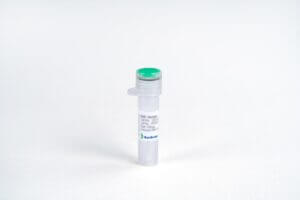
IL-5, Human(CHO-expressed)
$86.25 Add to cart View Product DetailsInterleukin-5 (IL-5), produced by mast cells, T cells and eosinophils, is responsible for the activities attributed to eosinophil differentiating factor, B cell growth factor II and T cell-replacing factor (TRF). It can increase production and mobilization of eosinophils and CD34+ progenitors from the bone marrow. IL-5 plays an important role in inducing cell-mediated immunity against parasitic infections and certain tumors. IL-5 also promotes differentiation of basophils and primes them for histamine and leukotriene release.
-

IL-5, Human(CHO-expressed)
$194.06 Add to cart View Product DetailsInterleukin-5 (IL-5), produced by mast cells, T cells and eosinophils, is responsible for the activities attributed to eosinophil differentiating factor, B cell growth factor II and T cell-replacing factor (TRF). It can increase production and mobilization of eosinophils and CD34+ progenitors from the bone marrow. IL-5 plays an important role in inducing cell-mediated immunity against parasitic infections and certain tumors. IL-5 also promotes differentiation of basophils and primes them for histamine and leukotriene release.
-

IL-5, Mouse
$86.25 Add to cart View Product DetailsInterleukin-5 (IL-5), produced by mast cells, T cells and eosinophils, is responsible for the activities attributed to eosinophil differentiating factor, B cell growth factor II and T cell-replacing factor (TRF). It can increase production and mobilization of eosinophils and CD34+ progenitors from the bone marrow. IL-5 plays an important role in inducing cell-mediated immunity against parasitic infections and certain tumors. IL-5 also promotes differentiation of basophils and primes them for histamine and leukotriene release.
-

IL-5, Mouse
$194.06 Add to cart View Product DetailsInterleukin-5 (IL-5), produced by mast cells, T cells and eosinophils, is responsible for the activities attributed to eosinophil differentiating factor, B cell growth factor II and T cell-replacing factor (TRF). It can increase production and mobilization of eosinophils and CD34+ progenitors from the bone marrow. IL-5 plays an important role in inducing cell-mediated immunity against parasitic infections and certain tumors. IL-5 also promotes differentiation of basophils and primes them for histamine and leukotriene release.
-

IL-5, Mouse
$664.13 Add to cart View Product DetailsInterleukin-5 (IL-5), produced by mast cells, T cells and eosinophils, is responsible for the activities attributed to eosinophil differentiating factor, B cell growth factor II and T cell-replacing factor (TRF). It can increase production and mobilization of eosinophils and CD34+ progenitors from the bone marrow. IL-5 plays an important role in inducing cell-mediated immunity against parasitic infections and certain tumors. IL-5 also promotes differentiation of basophils and primes them for histamine and leukotriene release.
-

IL-5, Mouse(CHO-expressed)
$1,470.56 Add to cart View Product DetailsInterleukin-5 (IL-5), produced by mast cells, T cells and eosinophils, is responsible for the activities attributed to eosinophil differentiating factor, B cell growth factor II and T cell-replacing factor (TRF). It can increase production and mobilization of eosinophils and CD34+ progenitors from the bone marrow. IL-5 plays an important role in inducing cell-mediated immunity against parasitic infections and certain tumors. IL-5 also promotes differentiation of basophils and primes them for histamine and leukotriene release.
-

IL-5, Mouse(CHO-expressed)
$86.25 Add to cart View Product DetailsInterleukin-5 (IL-5), produced by mast cells, T cells and eosinophils, is responsible for the activities attributed to eosinophil differentiating factor, B cell growth factor II and T cell-replacing factor (TRF). It can increase production and mobilization of eosinophils and CD34+ progenitors from the bone marrow. IL-5 plays an important role in inducing cell-mediated immunity against parasitic infections and certain tumors. IL-5 also promotes differentiation of basophils and primes them for histamine and leukotriene release.
-

IL-5, Mouse(CHO-expressed)
$194.06 Add to cart View Product DetailsInterleukin-5 (IL-5), produced by mast cells, T cells and eosinophils, is responsible for the activities attributed to eosinophil differentiating factor, B cell growth factor II and T cell-replacing factor (TRF). It can increase production and mobilization of eosinophils and CD34+ progenitors from the bone marrow. IL-5 plays an important role in inducing cell-mediated immunity against parasitic infections and certain tumors. IL-5 also promotes differentiation of basophils and primes them for histamine and leukotriene release.
-

IL-5, Rat
$2,018.25 Add to cart View Product DetailsInterleukin-5 (IL-5), produced by mast cells, T cells and eosinophils, is responsible for the activities attributed to eosinophil differentiating factor, B cell growth factor II and T cell-replacing factor (TRF). It can increase production and mobilization of eosinophils and CD34+ progenitors from the bone marrow. IL-5 plays an important role in inducing cell-mediated immunity against parasitic infections and certain tumors. IL-5 also promotes differentiation of basophils and primes them for histamine and leukotriene release.
-

IL-5, Rat
$86.25 Add to cart View Product DetailsInterleukin-5 (IL-5), produced by mast cells, T cells and eosinophils, is responsible for the activities attributed to eosinophil differentiating factor, B cell growth factor II and T cell-replacing factor (TRF). It can increase production and mobilization of eosinophils and CD34+ progenitors from the bone marrow. IL-5 plays an important role in inducing cell-mediated immunity against parasitic infections and certain tumors. IL-5 also promotes differentiation of basophils and primes them for histamine and leukotriene release.
-

IL-5, Rat
$271.69 Add to cart View Product DetailsInterleukin-5 (IL-5), produced by mast cells, T cells and eosinophils, is responsible for the activities attributed to eosinophil differentiating factor, B cell growth factor II and T cell-replacing factor (TRF). It can increase production and mobilization of eosinophils and CD34+ progenitors from the bone marrow. IL-5 plays an important role in inducing cell-mediated immunity against parasitic infections and certain tumors. IL-5 also promotes differentiation of basophils and primes them for histamine and leukotriene release.
-

IL-5, Rat
$2,018.25 Add to cart View Product DetailsInterleukin-5 (IL-5), produced by mast cells, T cells and eosinophils, mediates the activities of eosinophil differentiating factor, B cell growth factor II and T cell-replacing factor (TRF). It can increase production and mobilization of eosinophils and CD34+ progenitors from the bone marrow. IL-5 plays an important role in inducing cell-mediated immunity against parasitic infections and certain tumors. IL-5 also promotes differentiation of basophils and primes them for histamine and leukotriene release.
-

IL-5, Rat
$86.25 Add to cart View Product DetailsInterleukin-5 (IL-5), produced by mast cells, T cells and eosinophils, mediates the activities of eosinophil differentiating factor, B cell growth factor II and T cell-replacing factor (TRF). It can increase production and mobilization of eosinophils and CD34+ progenitors from the bone marrow. IL-5 plays an important role in inducing cell-mediated immunity against parasitic infections and certain tumors. IL-5 also promotes differentiation of basophils and primes them for histamine and leukotriene release.
-

IL-5, Rat
$271.69 Add to cart View Product DetailsInterleukin-5 (IL-5), produced by mast cells, T cells and eosinophils, mediates the activities of eosinophil differentiating factor, B cell growth factor II and T cell-replacing factor (TRF). It can increase production and mobilization of eosinophils and CD34+ progenitors from the bone marrow. IL-5 plays an important role in inducing cell-mediated immunity against parasitic infections and certain tumors. IL-5 also promotes differentiation of basophils and primes them for histamine and leukotriene release.
-

IL-5RA, His, Human
$2,238.19 Add to cart View Product DetailsInterleukin-5 Receptor alpha (IL-5Rα, CD125) is a 60 kDa hematopoietin receptor that plays a dominant role in eosinophil biology. Mature human IL-5 Rα consists of a 322 aa extracellular domain (ECD) with a WSxWS motif and a four cysteine motif, a 20 aa transmembrane segment, and a 58 aa cytoplasmic domain. Within the ECD, human IL-5Rα shares 71% aa sequence identity with mouse and rat IL-5 Rα. Alternate splicing of human IL-5 Rα generates soluble secreted forms which function as IL-5 antagonists. The high affinity receptor for IL-5 is a complex that consists of the ligand binding IL-5 Rα and the transmembrane common β chain (βc/CD131) which is shared with the receptor complexes for IL-3 and GMCSF. IL-5 Rα binds IL-5 at low affinity and then associates with preformed βc oligomers to form the signaling competent receptor complex. IL-5 stimulation of CD34+ hematopoietic progenitor cells induces the up-regulation of transmembrane IL-5Rα followed by eosinophilic differentiation and activation.
-

IL-5RA, His, Human
$90.56 Add to cart View Product DetailsInterleukin-5 Receptor alpha (IL-5Rα, CD125) is a 60 kDa hematopoietin receptor that plays a dominant role in eosinophil biology. Mature human IL-5 Rα consists of a 322 aa extracellular domain (ECD) with a WSxWS motif and a four cysteine motif, a 20 aa transmembrane segment, and a 58 aa cytoplasmic domain. Within the ECD, human IL-5Rα shares 71% aa sequence identity with mouse and rat IL-5 Rα. Alternate splicing of human IL-5 Rα generates soluble secreted forms which function as IL-5 antagonists. The high affinity receptor for IL-5 is a complex that consists of the ligand binding IL-5 Rα and the transmembrane common β chain (βc/CD131) which is shared with the receptor complexes for IL-3 and GMCSF. IL-5 Rα binds IL-5 at low affinity and then associates with preformed βc oligomers to form the signaling competent receptor complex. IL-5 stimulation of CD34+ hematopoietic progenitor cells induces the up-regulation of transmembrane IL-5Rα followed by eosinophilic differentiation and activation.
-

IL-5RA, His, Human
$293.25 Add to cart View Product DetailsInterleukin-5 Receptor alpha (IL-5Rα, CD125) is a 60 kDa hematopoietin receptor that plays a dominant role in eosinophil biology. Mature human IL-5 Rα consists of a 322 aa extracellular domain (ECD) with a WSxWS motif and a four cysteine motif, a 20 aa transmembrane segment, and a 58 aa cytoplasmic domain. Within the ECD, human IL-5Rα shares 71% aa sequence identity with mouse and rat IL-5 Rα. Alternate splicing of human IL-5 Rα generates soluble secreted forms which function as IL-5 antagonists. The high affinity receptor for IL-5 is a complex that consists of the ligand binding IL-5 Rα and the transmembrane common β chain (βc/CD131) which is shared with the receptor complexes for IL-3 and GMCSF. IL-5 Rα binds IL-5 at low affinity and then associates with preformed βc oligomers to form the signaling competent receptor complex. IL-5 stimulation of CD34+ hematopoietic progenitor cells induces the up-regulation of transmembrane IL-5Rα followed by eosinophilic differentiation and activation.
-

IL-6, His, Mouse
$155.25 Add to cart View Product DetailsInterleukin-6 (IL-6), also known as BSF-2, CDF and IFNB2, is a pleiotropic cytokine that participates in both pro-inflammatory and anti-inflammatory responses. It is produced mainly by T cells, macrophages, monocytes, endothelial cells and muscle cells. IL-6 binds to IL-6 receptor (IL-6R) to trigger the association of IL-6R with gp130, inducing signal transduction through JAKs and STATs. The biological functions of IL-6 are diverse. It stimulates B cell differentiation and antibody production, myeloma and plasmacytoma growth, and nerve cell differentiation. It also acts as a myokine, produced by muscle cells in response to muscle contraction and released into the blood stream to help break down fats and improve insulin resistance.
-

IL-6, His, Mouse
$68.14 Add to cart View Product DetailsInterleukin-6 (IL-6), also known as BSF-2, CDF and IFNB2, is a pleiotropic cytokine that participates in both pro-inflammatory and anti-inflammatory responses. It is produced mainly by T cells, macrophages, monocytes, endothelial cells and muscle cells. IL-6 binds to IL-6 receptor (IL-6R) to trigger the association of IL-6R with gp130, inducing signal transduction through JAKs and STATs. The biological functions of IL-6 are diverse. It stimulates B cell differentiation and antibody production, myeloma and plasmacytoma growth, and nerve cell differentiation. It also acts as a myokine, produced by muscle cells in response to muscle contraction and released into the blood stream to help break down fats and improve insulin resistance.
-
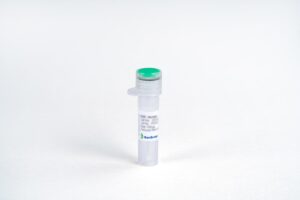
IL-6, Human
$1,177.31 Add to cart View Product DetailsInterleukin-6 (IL-6), also known as BSF-2, CDF and IFNB2, is a pleiotropic cytokine that participates in both pro-inflammatory and anti-inflammatory responses. It is produced mainly by T cells, macrophages, monocytes, endothelial cells and muscle cells. IL-6 binds to IL-6 receptor (IL-6R) to trigger the association of IL-6R with gp130, inducing signal transduction through JAKs and STATs. The biological functions of IL-6 are diverse. It stimulates B cell differentiation and antibody production, myeloma and plasmacytoma growth, and nerve cell differentiation. It also acts as a myokine, produced by muscle cells in response to muscle contraction and released into the blood stream to help break down fats and improve insulin resistance.
-

IL-6, Human
$68.14 Add to cart View Product DetailsInterleukin-6 (IL-6), also known as BSF-2, CDF and IFNB2, is a pleiotropic cytokine that participates in both pro-inflammatory and anti-inflammatory responses. It is produced mainly by T cells, macrophages, monocytes, endothelial cells and muscle cells. IL-6 binds to IL-6 receptor (IL-6R) to trigger the association of IL-6R with gp130, inducing signal transduction through JAKs and STATs. The biological functions of IL-6 are diverse. It stimulates B cell differentiation and antibody production, myeloma and plasmacytoma growth, and nerve cell differentiation. It also acts as a myokine, produced by muscle cells in response to muscle contraction and released into the blood stream to help break down fats and improve insulin resistance.
-

IL-6, Human
$155.25 Add to cart View Product DetailsInterleukin-6 (IL-6), also known as BSF-2, CDF and IFNB2, is a pleiotropic cytokine that participates in both pro-inflammatory and anti-inflammatory responses. It is produced mainly by T cells, macrophages, monocytes, endothelial cells and muscle cells. IL-6 binds to IL-6 receptor (IL-6R) to trigger the association of IL-6R with gp130, inducing signal transduction through JAKs and STATs. The biological functions of IL-6 are diverse. It stimulates B cell differentiation and antibody production, myeloma and plasmacytoma growth, and nerve cell differentiation. It also acts as a myokine, produced by muscle cells in response to muscle contraction and released into the blood stream to help break down fats and improve insulin resistance.
-

IL-6, Human(CHO-expressed)
$1,138.50 Add to cart View Product DetailsInterleukin-6 (IL-6), also known as BSF-2, CDF and IFNB2, is a pleiotropic cytokine that acts in both pro-inflammatory and anti-inflammatory responses. It is produced mainly by T cells, macrophages, monocytes, endothelial cells and muscle cells. IL-6 binds to IL-6 receptor (IL-6R) to trigger the association of IL-6R with gp130, inducing signal transduction through JAKs and STATs. The biological functions of IL-6 are diverse. It stimulates B cell differentiation and antibody production, myeloma and plasmacytoma growth, as well as nerve cell differentiation. It also acts as a myokine, produced by muscle cells in response to muscle contraction, to be released to the blood stream to help break down fats and improve insulin resistance.
-

IL-6, Human(CHO-expressed)
$63.83 Add to cart View Product DetailsInterleukin-6 (IL-6), also known as BSF-2, CDF and IFNB2, is a pleiotropic cytokine that acts in both pro-inflammatory and anti-inflammatory responses. It is produced mainly by T cells, macrophages, monocytes, endothelial cells and muscle cells. IL-6 binds to IL-6 receptor (IL-6R) to trigger the association of IL-6R with gp130, inducing signal transduction through JAKs and STATs. The biological functions of IL-6 are diverse. It stimulates B cell differentiation and antibody production, myeloma and plasmacytoma growth, as well as nerve cell differentiation. It also acts as a myokine, produced by muscle cells in response to muscle contraction, to be released to the blood stream to help break down fats and improve insulin resistance.
-

IL-6, Human(CHO-expressed)
$146.63 Add to cart View Product DetailsInterleukin-6 (IL-6), also known as BSF-2, CDF and IFNB2, is a pleiotropic cytokine that acts in both pro-inflammatory and anti-inflammatory responses. It is produced mainly by T cells, macrophages, monocytes, endothelial cells and muscle cells. IL-6 binds to IL-6 receptor (IL-6R) to trigger the association of IL-6R with gp130, inducing signal transduction through JAKs and STATs. The biological functions of IL-6 are diverse. It stimulates B cell differentiation and antibody production, myeloma and plasmacytoma growth, as well as nerve cell differentiation. It also acts as a myokine, produced by muscle cells in response to muscle contraction, to be released to the blood stream to help break down fats and improve insulin resistance.
-

IL-6, Mouse
$2,906.63 Add to cart View Product DetailsInterleukin-6 (IL-6), also known as BSF-2, CDF and IFNB2, is a pleiotropic cytokine that participates in both pro-inflammatory and anti-inflammatory responses. It is produced mainly by T cells, macrophages, monocytes, endothelial cells and muscle cells. IL-6 binds to IL-6 receptor (IL-6R) to trigger the association of IL-6R with gp130, inducing signal transduction through JAKs and STATs. The biological functions of IL-6 are diverse. It stimulates B cell differentiation and antibody production, myeloma and plasmacytoma growth, and nerve cell differentiation. It also acts as a myokine, produced by muscle cells in response to muscle contraction and released into the blood stream to help break down fats and improve insulin resistance.
-

IL-6, Mouse
$155.25 Add to cart View Product DetailsInterleukin-6 (IL-6), also known as BSF-2, CDF and IFNB2, is a pleiotropic cytokine that participates in both pro-inflammatory and anti-inflammatory responses. It is produced mainly by T cells, macrophages, monocytes, endothelial cells and muscle cells. IL-6 binds to IL-6 receptor (IL-6R) to trigger the association of IL-6R with gp130, inducing signal transduction through JAKs and STATs. The biological functions of IL-6 are diverse. It stimulates B cell differentiation and antibody production, myeloma and plasmacytoma growth, and nerve cell differentiation. It also acts as a myokine, produced by muscle cells in response to muscle contraction and released into the blood stream to help break down fats and improve insulin resistance.
-

IL-6, Rat (HEK 293-expressed)
$2,018.25 Add to cart View Product DetailsInterleukin-6 (IL-6), also known as BSF-2, CDF and IFNB2, is a pleiotropic cytokine that participates in both pro-inflammatory and anti-inflammatory responses. It is produced mainly by T cells, macrophages, monocytes, endothelial cells and muscle cells. IL-6 binds to IL-6 receptor (IL-6R) to trigger the association of IL-6R with gp130, inducing signal transduction through JAKs and STATs. The biological functions of IL-6 are diverse. It stimulates B cell differentiation and antibody production, myeloma and plasmacytoma growth, and nerve cell differentiation. It also acts as a myokine, produced by muscle cells in response to muscle contraction and released into the blood stream to help break down fats and improve insulin resistance.
-

IL-6, Rat (HEK 293-expressed)
$155.25 Add to cart View Product DetailsInterleukin-6 (IL-6), also known as BSF-2, CDF and IFNB2, is a pleiotropic cytokine that participates in both pro-inflammatory and anti-inflammatory responses. It is produced mainly by T cells, macrophages, monocytes, endothelial cells and muscle cells. IL-6 binds to IL-6 receptor (IL-6R) to trigger the association of IL-6R with gp130, inducing signal transduction through JAKs and STATs. The biological functions of IL-6 are diverse. It stimulates B cell differentiation and antibody production, myeloma and plasmacytoma growth, and nerve cell differentiation. It also acts as a myokine, produced by muscle cells in response to muscle contraction and released into the blood stream to help break down fats and improve insulin resistance.
-

IL-6, Rat (HEK 293-expressed)
$68.14 Add to cart View Product DetailsInterleukin-6 (IL-6), also known as BSF-2, CDF and IFNB2, is a pleiotropic cytokine that participates in both pro-inflammatory and anti-inflammatory responses. It is produced mainly by T cells, macrophages, monocytes, endothelial cells and muscle cells. IL-6 binds to IL-6 receptor (IL-6R) to trigger the association of IL-6R with gp130, inducing signal transduction through JAKs and STATs. The biological functions of IL-6 are diverse. It stimulates B cell differentiation and antibody production, myeloma and plasmacytoma growth, and nerve cell differentiation. It also acts as a myokine, produced by muscle cells in response to muscle contraction and released into the blood stream to help break down fats and improve insulin resistance.
-

IL-6R, Human
$94.88 Add to cart View Product DetailsInterleukin-6 Receptor Alpha, also known as IL-6RA, IL-6R1 and CD126, belongs to the type I cytokine receptor family. It is mainly expressed on T cells, fibroblasts and macrophages. IL-6RA couples with gp130 to form the IL-6 receptor; IL-6RA binds specifically to IL-6 and depends on gp130 to transmit signals. IL-6RA dysfunction has been correlated with the pathogenesis of many diseases, such as multiple myeloma, autoimmune diseases and prostate cancer. Soluble IL-6RA, which consists of only the extracellular domain of IL-6RA, acts as an agonist of IL-6 activity.
-

IL-6R, Human
$379.50 Add to cart View Product DetailsInterleukin-6 Receptor Alpha, also known as IL-6RA, IL-6R1 and CD126, belongs to the type I cytokine receptor family. It is mainly expressed on T cells, fibroblasts and macrophages. IL-6RA couples with gp130 to form the IL-6 receptor; IL-6RA binds specifically to IL-6 and depends on gp130 to transmit signals. IL-6RA dysfunction has been correlated with the pathogenesis of many diseases, such as multiple myeloma, autoimmune diseases and prostate cancer. Soluble IL-6RA, which consists of only the extracellular domain of IL-6RA, acts as an agonist of IL-6 activity.
-

IL-7, His, Human(CHO-expressed)
$2,018.25 Add to cart View Product DetailsInterleukin-7 (IL-7), also known as lymphopoietin 1 and pre-B cell factor, is a hematopoietic growth factor belonging to the IL-7/IL-9 family. It is produced by keratinocytes, dendritic cells, hepatocytes, neurons and epithelial cells. IL-7 binds and signals through IL-7 receptor, a heterodimer consisting of IL-7 receptor alpha and common gamma chain receptor. IL-7 plays a role in regulating early B cell and T cell development. It is also important for optimal dendritic cell-T cell interaction.
-

IL-7, His, Human(CHO-expressed)
$194.06 Add to cart View Product DetailsInterleukin-7 (IL-7), also known as lymphopoietin 1 and pre-B cell factor, is a hematopoietic growth factor belonging to the IL-7/IL-9 family. It is produced by keratinocytes, dendritic cells, hepatocytes, neurons and epithelial cells. IL-7 binds and signals through IL-7 receptor, a heterodimer consisting of IL-7 receptor alpha and common gamma chain receptor. IL-7 plays a role in regulating early B cell and T cell development. It is also important for optimal dendritic cell-T cell interaction.
-

IL-7, His, Mouse
$94.88 Add to cart View Product DetailsInterleukin-7 (IL-7), also known as lymphopoietin 1 and pre-B cell factor, is a hematopoietic growth factor belonging to the IL-7/IL-9 family. It is produced by keratinocytes, dendritic cells, hepatocytes, neurons and epithelial cells. IL-7 binds and signals through IL-7 receptor, a heterodimer consisting of IL-7 receptor alpha and common gamma chain receptor. IL-7 plays a role in regulating early B cell and T cell development. It is also important for optimal dendritic cell-T cell interaction.
-

IL-7, His, Mouse
$314.81 Add to cart View Product DetailsInterleukin-7 (IL-7), also known as lymphopoietin 1 and pre-B cell factor, is a hematopoietic growth factor belonging to the IL-7/IL-9 family. It is produced by keratinocytes, dendritic cells, hepatocytes, neurons and epithelial cells. IL-7 binds and signals through IL-7 receptor, a heterodimer consisting of IL-7 receptor alpha and common gamma chain receptor. IL-7 plays a role in regulating early B cell and T cell development. It is also important for optimal dendritic cell-T cell interaction.
-

IL-7, Human
$3,458.63 Add to cart View Product DetailsInterleukin-7 (IL-7), also known as lymphopoietin 1 and pre-B cell factor, is a hematopoietic growth factor belonging to the IL-7/IL-9 family. It is produced by keratinocytes, dendritic cells, hepatocytes, neurons and epithelial cells. IL-7 binds and signals through IL-7 receptor, a heterodimer consisting of IL-7 receptor alpha and common gamma chain receptor. IL-7 plays a role in regulating early B cell and T cell development. It is also important for optimal dendritic cell-T cell interaction.
-

IL-7, Human
$155.25 Add to cart View Product DetailsInterleukin-7 (IL-7), also known as lymphopoietin 1 and pre-B cell factor, is a hematopoietic growth factor belonging to the IL-7/IL-9 family. It is produced by keratinocytes, dendritic cells, hepatocytes, neurons and epithelial cells. IL-7 binds and signals through IL-7 receptor, a heterodimer consisting of IL-7 receptor alpha and common gamma chain receptor. IL-7 plays a role in regulating early B cell and T cell development. It is also important for optimal dendritic cell-T cell interaction.
-
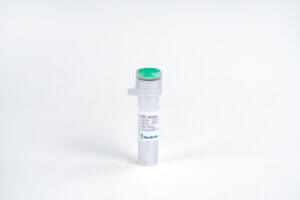
IL-8 (77aa)/CXCL8, Human
$1,323.94 Add to cart View Product DetailsInterleukin-8 (IL-8), also known as CXCL8, GCP-1 and NAP-1, is one of the first discovered chemokines and belongs to the CXCL family, in which the first two conserved cysteines are separated by one residue. In vivo, IL-8 exists in two forms: a 77 a.a. protein produced by endothelial cells, and the more active 72 a.a. protein produced by monocytes. The receptors for IL-8 are the seven-helical G-protein coupled receptors CXCR1 and CXCR2, exclusively expressed on neutrophils. The functions of IL-8 are to induce rapid changes in cell morphology, activate integrins, and release the granule contents of neutrophils. Thus, IL-8 can enhance the antimicrobial actions of defense cells. It is secreted by monocytes, macrophages and endothelial cells. IL-8 signals through CXCR1 and CXCR2 to chemoattract neutrophils, basophils, and T cells. IL-8 is also a potent promoter of angiogenesis. Other functions of this protein, such as involvement in bronchiolitis pathogenesis, have also been reported.
-

IL-8 (77aa)/CXCL8, Human
$90.56 Add to cart View Product DetailsInterleukin-8 (IL-8), also known as CXCL8, GCP-1 and NAP-1, is one of the first discovered chemokines and belongs to the CXCL family, in which the first two conserved cysteines are separated by one residue. In vivo, IL-8 exists in two forms: a 77 a.a. protein produced by endothelial cells, and the more active 72 a.a. protein produced by monocytes. The receptors for IL-8 are the seven-helical G-protein coupled receptors CXCR1 and CXCR2, exclusively expressed on neutrophils. The functions of IL-8 are to induce rapid changes in cell morphology, activate integrins, and release the granule contents of neutrophils. Thus, IL-8 can enhance the antimicrobial actions of defense cells. It is secreted by monocytes, macrophages and endothelial cells. IL-8 signals through CXCR1 and CXCR2 to chemoattract neutrophils, basophils, and T cells. IL-8 is also a potent promoter of angiogenesis. Other functions of this protein, such as involvement in bronchiolitis pathogenesis, have also been reported.
-

IL-8 (77aa)/CXCL8, Human
$43.13 Add to cart View Product DetailsInterleukin-8 (IL-8), also known as CXCL8, GCP-1 and NAP-1, is one of the first discovered chemokines and belongs to the CXCL family, in which the first two conserved cysteines are separated by one residue. In vivo, IL-8 exists in two forms: a 77 a.a. protein produced by endothelial cells, and the more active 72 a.a. protein produced by monocytes. The receptors for IL-8 are the seven-helical G-protein coupled receptors CXCR1 and CXCR2, exclusively expressed on neutrophils. The functions of IL-8 are to induce rapid changes in cell morphology, activate integrins, and release the granule contents of neutrophils. Thus, IL-8 can enhance the antimicrobial actions of defense cells. It is secreted by monocytes, macrophages and endothelial cells. IL-8 signals through CXCR1 and CXCR2 to chemoattract neutrophils, basophils, and T cells. IL-8 is also a potent promoter of angiogenesis. Other functions of this protein, such as involvement in bronchiolitis pathogenesis, have also been reported.
-

IL-8/CXCL8 (77aa), Human(CHO-expressed)
$1,177.31 Add to cart View Product DetailsInterleukin-8 (IL-8), also known as CXCL8, GCP-1 and NAP-1, is one of the first discovered chemokines and belongs to the CXCL family, in which the first two conserved cysteines are separated by one residue. In vivo, IL-8 exists in two forms: a 77 a.a. protein produced by endothelial cells, and the more active 72 a.a. protein produced by monocytes. The receptors for IL-8 are the seven-helical G-protein coupled receptors CXCR1 and CXCR2, exclusively expressed on neutrophils. The functions of IL-8 are to induce rapid changes in cell morphology, activate integrins, and release the granule contents of neutrophils. Thus, IL-8 can enhance the antimicrobial actions of defense cells. It is secreted by monocytes, macrophages and endothelial cells. IL-8 signals through CXCR1 and CXCR2 to chemoattract neutrophils, basophils, and T cells. IL-8 is also a potent promoter of angiogenesis. Other functions of this protein, such as involvement in bronchiolitis pathogenesis, have also been reported.
-

IL-8/CXCL8 (77aa), Human(CHO-expressed)
$68.14 Add to cart View Product DetailsInterleukin-8 (IL-8), also known as CXCL8, GCP-1 and NAP-1, is one of the first discovered chemokines and belongs to the CXCL family, in which the first two conserved cysteines are separated by one residue. In vivo, IL-8 exists in two forms: a 77 a.a. protein produced by endothelial cells, and the more active 72 a.a. protein produced by monocytes. The receptors for IL-8 are the seven-helical G-protein coupled receptors CXCR1 and CXCR2, exclusively expressed on neutrophils. The functions of IL-8 are to induce rapid changes in cell morphology, activate integrins, and release the granule contents of neutrophils. Thus, IL-8 can enhance the antimicrobial actions of defense cells. It is secreted by monocytes, macrophages and endothelial cells. IL-8 signals through CXCR1 and CXCR2 to chemoattract neutrophils, basophils, and T cells. IL-8 is also a potent promoter of angiogenesis. Other functions of this protein, such as involvement in bronchiolitis pathogenesis, have also been reported.
-

IL-8/CXCL8 (77aa), Human(CHO-expressed)
$155.25 Add to cart View Product DetailsInterleukin-8 (IL-8), also known as CXCL8, GCP-1 and NAP-1, is one of the first discovered chemokines and belongs to the CXCL family, in which the first two conserved cysteines are separated by one residue. In vivo, IL-8 exists in two forms: a 77 a.a. protein produced by endothelial cells, and the more active 72 a.a. protein produced by monocytes. The receptors for IL-8 are the seven-helical G-protein coupled receptors CXCR1 and CXCR2, exclusively expressed on neutrophils. The functions of IL-8 are to induce rapid changes in cell morphology, activate integrins, and release the granule contents of neutrophils. Thus, IL-8 can enhance the antimicrobial actions of defense cells. It is secreted by monocytes, macrophages and endothelial cells. IL-8 signals through CXCR1 and CXCR2 to chemoattract neutrophils, basophils, and T cells. IL-8 is also a potent promoter of angiogenesis. Other functions of this protein, such as involvement in bronchiolitis pathogenesis, have also been reported.
-
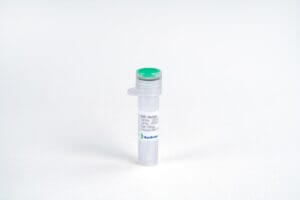
IL-9, Human
$2,018.25 Add to cart View Product DetailsInterleukin 9, also known as IL9, is a cytokine (cell signalling molecule) belonging to the group of interleukins. The protein encoded by this gene is a cytokine produced by T-cells and specifically by CD4+ helper cells that acts as a regulator of a variety of hematopoietic cells. This cytokine stimulates cell proliferation and prevents apoptosis. It functions through the interleukin-9 receptor (IL9R), which activates different signal transducer and activator (STAT) proteins and thus connects this cytokine to various biological processes. The gene encoding this cytokine has been identified as a candidate gene for asthma. Genetic studies on a mouse model of asthma demonstrated that this cytokine is a determining factor in the pathogenesis of bronchial hyperresponsiveness.
-

IL-9, Human
$86.25 Add to cart View Product DetailsInterleukin 9, also known as IL9, is a cytokine (cell signalling molecule) belonging to the group of interleukins. The protein encoded by this gene is a cytokine produced by T-cells and specifically by CD4+ helper cells that acts as a regulator of a variety of hematopoietic cells. This cytokine stimulates cell proliferation and prevents apoptosis. It functions through the interleukin-9 receptor (IL9R), which activates different signal transducer and activator (STAT) proteins and thus connects this cytokine to various biological processes. The gene encoding this cytokine has been identified as a candidate gene for asthma. Genetic studies on a mouse model of asthma demonstrated that this cytokine is a determining factor in the pathogenesis of bronchial hyperresponsiveness.
-

IL-9, Human
$271.69 Add to cart View Product DetailsInterleukin 9, also known as IL9, is a cytokine (cell signalling molecule) belonging to the group of interleukins. The protein encoded by this gene is a cytokine produced by T-cells and specifically by CD4+ helper cells that acts as a regulator of a variety of hematopoietic cells. This cytokine stimulates cell proliferation and prevents apoptosis. It functions through the interleukin-9 receptor (IL9R), which activates different signal transducer and activator (STAT) proteins and thus connects this cytokine to various biological processes. The gene encoding this cytokine has been identified as a candidate gene for asthma. Genetic studies on a mouse model of asthma demonstrated that this cytokine is a determining factor in the pathogenesis of bronchial hyperresponsiveness.
-

IL-9, Mouse
$2,018.25 Add to cart View Product DetailsInterleukin 9, also known as IL9, is a cytokine (cell signalling molecule) belonging to the group of interleukins. The protein encoded by this gene is a cytokine produced by T-cells and specifically by CD4+ helper cells that acts as a regulator of a variety of hematopoietic cells. This cytokine stimulates cell proliferation and prevents apoptosis. It functions through the interleukin-9 receptor (IL9R), which activates different signal transducer and activator (STAT) proteins and thus connects this cytokine to various biological processes. The gene encoding this cytokine has been identified as a candidate gene for asthma. Genetic studies on a mouse model of asthma demonstrated that this cytokine is a determining factor in the pathogenesis of bronchial hyperresponsiveness.
-

IL-9, Mouse
$94.88 Add to cart View Product DetailsInterleukin 9, also known as IL9, is a cytokine (cell signalling molecule) belonging to the group of interleukins. The protein encoded by this gene is a cytokine produced by T-cells and specifically by CD4+ helper cells that acts as a regulator of a variety of hematopoietic cells. This cytokine stimulates cell proliferation and prevents apoptosis. It functions through the interleukin-9 receptor (IL9R), which activates different signal transducer and activator (STAT) proteins and thus connects this cytokine to various biological processes. The gene encoding this cytokine has been identified as a candidate gene for asthma. Genetic studies on a mouse model of asthma demonstrated that this cytokine is a determining factor in the pathogenesis of bronchial hyperresponsiveness.
